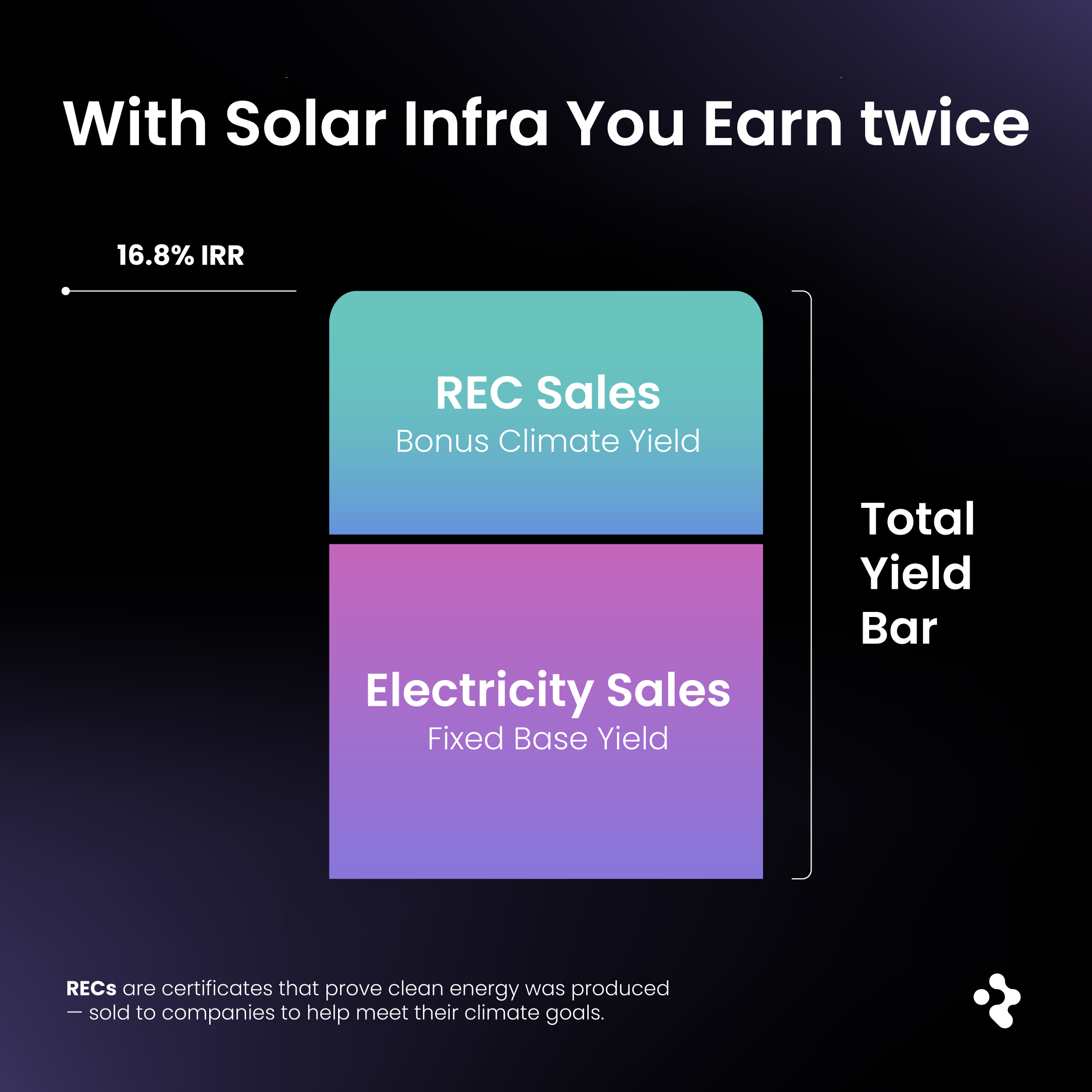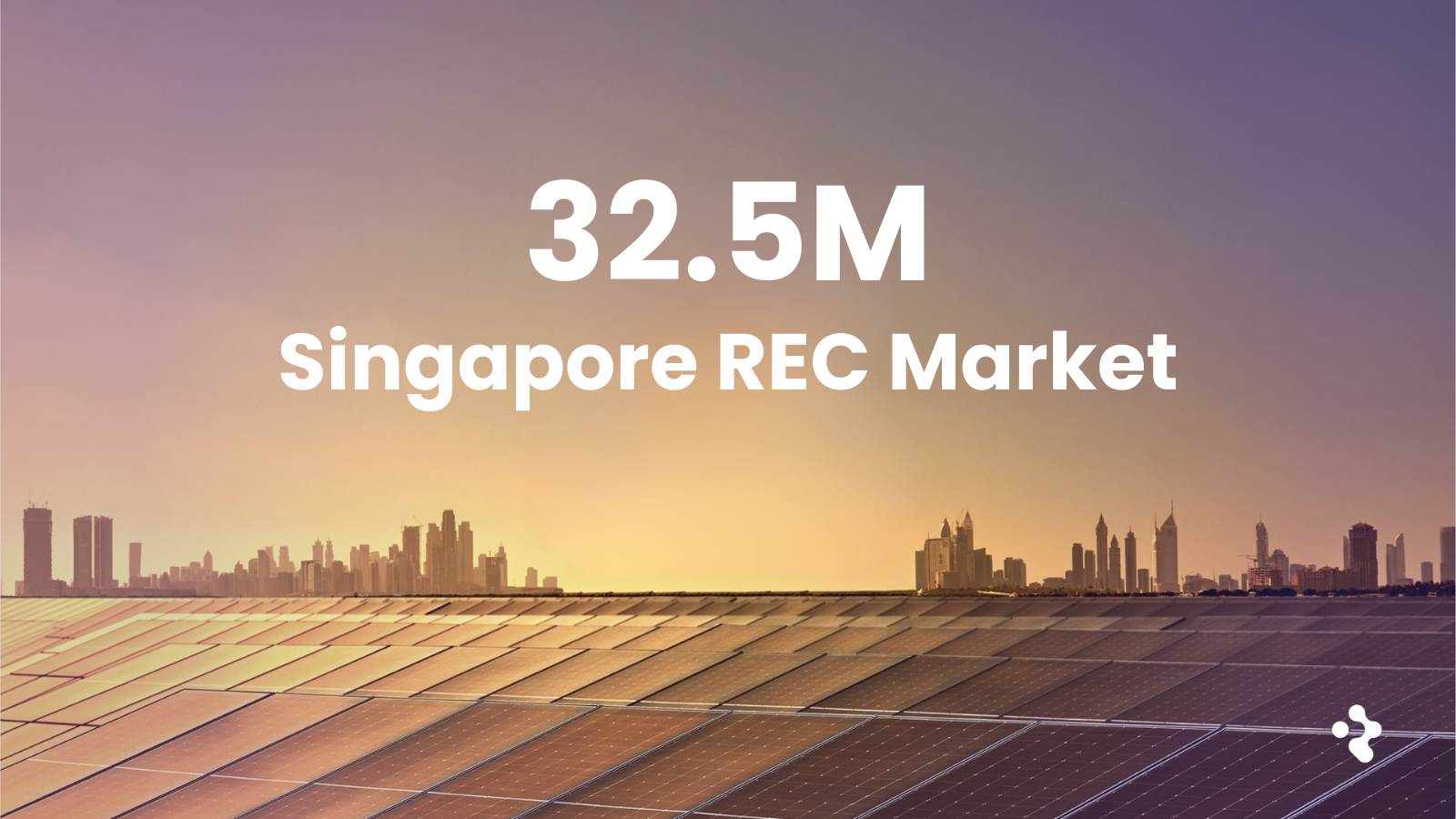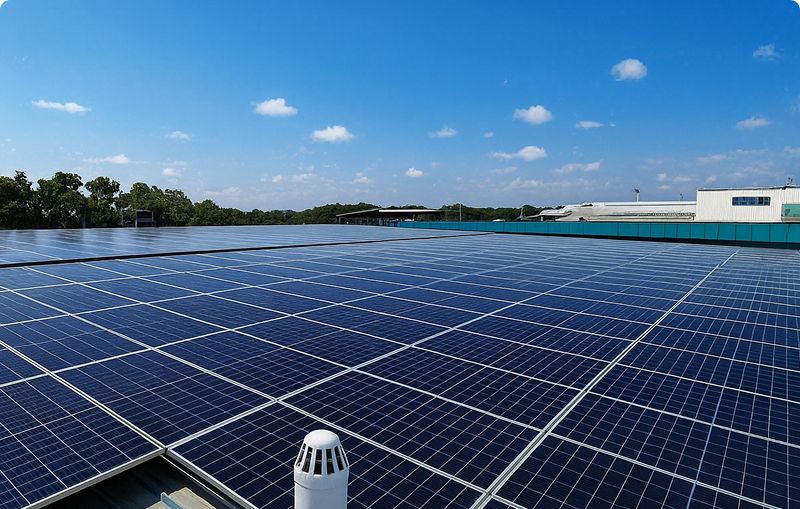Singapore's Solar Projects Earn More with RECs, How to Benefit with ReFi Hub

Singapore's Solar Projects Earn More with RECs, How to Benefit with ReFi Hub
When we talk about investing in solar energy, most people think of one revenue stream: selling electricity. But in places like Singapore, solar plants earn in two layers, and that’s what creates premium returns for investors.
Let’s break it down simply.
The Two Layers of Solar Income
Some solar power projects in Singapore earn from:
- Selling the electricity they generate
- Earning Renewable Energy Certificates (RECs), digital proof that the electricity was clean
It’s this second layer that many traditional investors overlook.

What Are RECs, and Why Do They Matter?
A Renewable Energy Certificate (REC) is a digital receipt showing that one unit of electricity came from a clean source, like solar, wind, or hydro.
RECs are an emerging asset class, gaining traction globally in markets like the U.S., Europe, and Australia. They play a key role in helping companies meet sustainability targets.
In Singapore, demand is especially high. Tech giants like Apple and Google need RECs, but rooftop and land space is limited, so local supply falls short. That imbalance gives RECs strong value and gives Singapore solar projects an edge. It’s this persistent gap that drives long-term demand, and premium returns.

The Data Backs It Up
Singapore’s REC market is growing fast:
- Valued at USD 32.5 million in 2024
- Forecast to reach USD 90 million by 2032
- That’s a 12% compound annual growth rate
The result? RECs in Singapore trade at a significant premium, often 5 to 10 times higher than in other parts of Asia. They typically sell for $30–$40 per certificate, compared to just a few dollars elsewhere.
This additional income can boost a project’s returns by 20–30%, making solar in Singapore especially attractive.

ReFi Hub and the Pivot Green Opportunity
This is where ReFi Hub and our latest listing, Pivot Green, come in.
Pivot Green operates a live rooftop solar plant in Singapore. It’s already generating both electricity and RECs, earning double.
Through ReFi Hub, you can own tokenised shares of that plant and earn monthly USDC cashflow from its real-world income streams.
You’re funding clean energy, and tapping into premium yield from a high-demand REC market.
What are the Risks Around RECs?
As with any asset, there are risks to consider:
- Market risk: REC prices can fluctuate based on demand from corporates or shifts in energy trends.
- Regulatory risk: Changes in sustainability reporting or government policy could affect how RECs are valued or used.
- Project performance: If the solar plant underperforms or encounters technical issues, returns may be impacted.
- Early-stage market: The REC space is growing fast but still small. Liquidity and pricing structures are evolving.
That’s why we chose Pivot Green. It’s an operational solar plant in Singapore, in one of Asia’s most active REC markets.
The project benefits from strong corporate demand and clear government energy mandates. It’s a way to access an emerging asset class with supportive market forces behind it.
The Takeaway
Singapore’s solar sector offers something rare: clean energy projects with dual income streams and high-yield potential thanks to limited supply and strong corporate demand for RECs.
By opening access to these opportunities through tokenisation, ReFi Hub connects climate impact with investor returns, backed by real-world data and live cashflow.
-> See Pivot Green listing page: http://app.refihub.io/investments/8/


